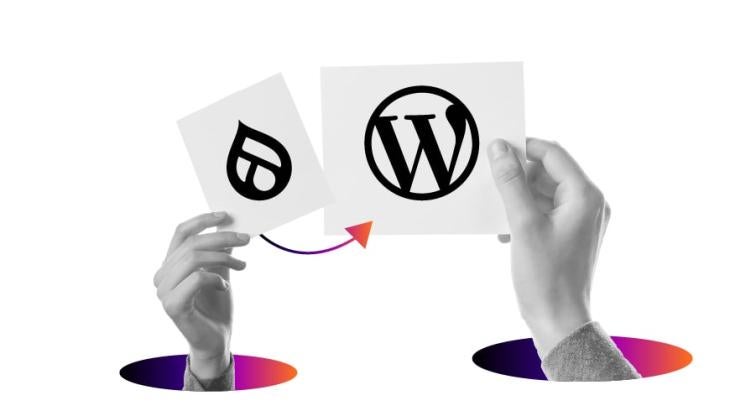Caity Bishop, Senior Content Strategist Reading estimate: 3 minutes
How Mediacurrent Built an Open Source Emergency Response Site
Organizations can spin up a website in a day—a spectacular acceleration of the time it typically takes to launch a site that is secure, scalable, and user-friendly.
- Christine Flynn Bryan, Mediacurrent
Mediacurrent, a digital marketing agency and a Pantheon partner, is offering open source, pre-built emergency response sites to organizations responding to COVID-19. Their goal is to help mission-critical organizations and municipalities quickly build and update their websites—aiding in the dissemination of trustworthy, timely information during times of the pandemic.
The offering, called Area Alert, is a highly performant, low-cost, and easy-to-update Drupal emergency website. It uses Pantheon's Custom Upstreams to enable site owners to customize freely, without needing IT support or risking site failure.
"One inescapable truth of this project is that people doing emergency response are busy dealing with the emergency," says Christine Flynn Bryan, Senior Project Manager at Mediacurrent.
"The ease of deployment with Pantheon’s Custom Upstreams, merged with the smart design and sample content from Mediacurrent, enables communities to spin up their websites in a day—a spectacular acceleration of the time it typically takes to launch a site that is secure, scalable, and user-friendly."
Area Alert goes hand-in-hand with Pantheon's offering of free hosting, available to qualifying front line organizations for at least 90 days. Together, Pantheon and Mediacurrent are "helping first responders and others involved in emergency communications cut through red tape," Christine explains.
There were a number of unique considerations in building Area Alert. Here, we sit down with Mediacurrent's team to talk through the impetus for the project and how it was built.
Obviously, there's a need right now for crisis-related communication, but was there a specific ask or example that pushed you to create Area Alert?
"Initially, a major U.S. city asked us to help them improve how they were providing COVID-19 information to their citizens. We realized there was a need there, especially for smaller cities and towns that don’t have the kind of staff we are able to bring in to solve this problem.
"The other strong driver behind Area Alert—and why it isn’t called 'COVID-19 Alert'—was that Becky Cierpich, our lead designer on this project, experienced a national emergency herself when she lived in New Orleans during Hurricane Katrina. She brought to the table a firm belief that this site had to handle not just the current pandemic, but hurricane season and other emergencies at the same time."
Intuitive UX design is key in creating emergency response websites. How did you approach this challenge?
"We took a user-centric approach, mapping the journeys of citizens faced with some of the most difficult days of their lives—and in some cases matters of life and death. We strove to design a user interface that does not inspire panic and instead reassures the visitor that help is on the way and the situation is as under control as it can be.
Specific to a pandemic like COVID-19, we emphasized the most important and timely pieces of information, such as 'Stay At Home Order' or 'How to Help Others.'
- Becky Cierpich, UX/UI Designer
How did the process unfold—working together with Pantheon, Drupal, and any other stakeholders—putting this offering together?
"This was a great example of old friends coming together. We had been discussing the idea of a COVID-19 website solution internally around the same time Pantheon let us know they would be offering free elite hosting plans for affected communities. We quickly decided to partner together to come up with a solution that would help organizations and municipalities bootstrap an emergency response site. We are thrilled with the result and reception from the community!"
- Jay Callicott, VP of Technical Operations
What advice do you have for people leveraging this offering? How can they make the most of it?
"The goal of the Area Alert project is to enable organizations to rapidly develop and deploy their emergency website. We encourage groups leveraging Area Alert to take advantage of the pre-loaded sample content to create a foundation for the website and use the components built into the site to quickly create different sections of each page. The “color” feature, which allows you to quickly add branded colors, is also a great way to personalize the website."
- Jay Callicott, VP of Technical Operations
The Medicurrent team is continuing to make improvements to Area Alert, providing organizations the best possible site framework for communicating timely information during this pandemic. Click here to learn more.
Topics
Discover More
Drupal for Civic Engagement: the City of Chattanooga Story
Yulia Popova
Reading estimate: 3 minutes
How Drupal Can Deliver Scalability and Flexibility for the Public Sector
Josh Koenig
Reading estimate: 4 minutes

.png.jpeg?itok=tTQnJfls)
